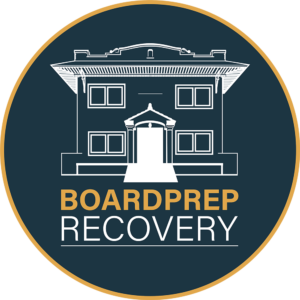When most dentists show up for work at a dental office, they’re not working alongside another dentist who is impaired by alcohol or drugs. Still, statistics indicate anywhere from 12 to 19% of dentists face a substance use disorder within their lifetime.[1]
Given this understandably surprising (if not startling) information, the question arises: What can you do if you sense your colleague has a substance use disorder (i.e., a chemical dependency on alcohol and/or drugs)?
Ideally, being straightforward with an impaired fellow dentist would be the “right” approach. According to the American Dental Association’s (ADA’s) Principles of Ethics and Code of Professional Conduct, “it is unethical for a dentist to practice while abusing controlled substances, alcohol or other chemical agents that impair the ability to practice. (Further)… all dentists have an ethical obligation to urge chemically-impaired colleagues to seek treatment.”[2]
In other words, all dentists have an ethical responsibility to report evidence of an impaired colleague to the professional assistance committee of a dental society. That is, instead of ignoring it or covering it up, a fellow dentist concerned about his or her colleague’s seeming substance problem should initially try and talk with the person about their concern for his or her well-being.
Yes, one must overcome the discomfort of confronting a colleague with what they’re observing, as well as the conceivable “consequences” such an encounter might bring about. However, making his or her name known to somebody in the state’s dental professional assistance program (or well-being wellness program) may be an integral part of talking to the impaired dentist. For example, one could contact a representative of the state dentist well-being committee and stage an intervention as part of the initial conversation. This additional support may compel the colleague to accept his or her need of help.
The next step, if a dentist agrees to cooperate, is that this person be referred for evaluation by an addiction professional (e.g., an American Society of Addiction Medicine (ASAM)-certified physician or treatment center evaluation staff member).
Per the ADA guidelines, if the addiction professional determines an addiction issue exists, the dentist must agree to treatment – either in-patient residential, intensive out-patient or both.[3] As they follow through with treatment, dentists with a substance use disorder will be made aware that the state dental board may find out about the problem. However, if so, the Dentist Well-Being Program (or Dentist Health and Wellness Program) can advocate on their behalf.
According to the ADA Dentist Well-Being Programs Handbook, there are three kinds of well-being programs in dentistry: peer assistance programs, diversion programs and multidisciplinary programs.[4]
Peer assistance programs are composed of trained volunteer dentists who supply information and resources for impaired dentists – colleagues helping colleagues in need of assistance.[5]
Diversion programs involve a process by which an individual is “diverted” from regulatory (licensing board) action onto an alternative track, provided the impaired individual complies with the program’s recommendations of treatment and mandatory testing.[6]
And multidisciplinary programs are formal programs in which an agency, usually state-mandated, is charged with assisting licensed health care workers.[7]
Statistics indicate higher success rates when dentists go through treatment within their healthcare professionals peer group (which helps to reduce shame and break patterns of denial). The results of a 2003 California dentist well-being program show a 74 percent success rate of recovery for those who participated in treatment with other dental and healthcare professionals.[8]
In fact, a 2009 study showed that 78 percent of healthcare professionals who went through treatment together had not relapsed after entering treatment, with an average of 7.2 years of recovery. Of the remaining 22 percent, two-thirds had a brief relapse, followed by five or more continuous years of sobriety during the study period.[9]
The conclusion drawn is that the combination of in-patient/residential treatment with peers, followed by five or more years of structured, accountable monitoring is key to success.
The important parts of a dentist’s recovering from any substance use disorder are treatment and supportive, follow-up monitoring. The American Society of Addiction Medicine’s defines addiction as a disease — treatable, yes, but left untreated, (it can be) a fatal disease.[10]
Treatment and follow-up recovery support are available for dentists who want freedom from their chemical dependency, who want to save their lives, their practice and their families. Assisting them through direct, responsible and state-assisted and/or peer-supported communication very well may help them with all three.
[1]
[3] Ibid.
[4] http://www.ada.org/~/media/ADA/Files/ADA_Dentist_WellBeing%20Handbook.pdf?la=en
[5] Ibid.
[6] Ibid.
[7] Ibid.
[8] Ibid.
[9] https://www.bmj.com/content/337/bmj.a2038.abstract
[10] https://www.asam.org/Quality-Science/definition-of-addiction







